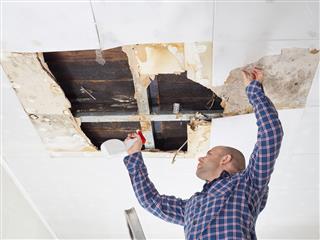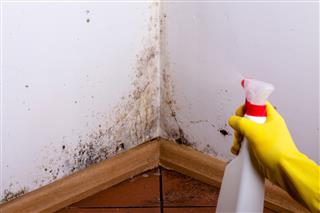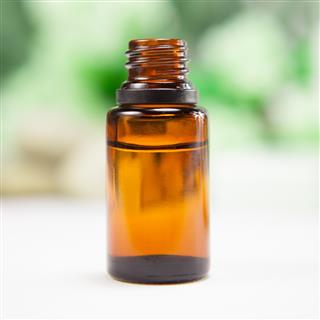
Struggling to find a good mold and mildew remover? Well, worry no more, and read this article. It will not only tell you about the best bathroom mold and mildew remover, but a very good one for wood too.
To begin with, you must first understand what mold and mildew refers to. They are fungal growths, but there are slight differences between the two. Mold is those microscopic fungi that grow as multicellular filaments, which are scientifically known as hyphae. Some of these are disease-causing, and cause food decay. But some varieties are crucial for methods such as the chemical breakdown of substances, other than producing myriad food antibiotics, enzymes, food items, and drinkables. Mold generally grows on items that it can feed on, and those which are organic in nature. For instance, you will notice mold growth on clothes, leather, and paper. Apart from these, one also sees it on damp surfaces, such as walls, ceilings, and floors of buildings.
Mildew, on the other hand, is only a particular type of musty smelling mold, that thrives primarily in hot, dark, and humid corners which hardly get any air at all. So, it can grow on practically anything that is moist for a long time. Mold can be hazardous to health, in the way that it can work up allergies in some people, and even minor allergies can result in excessive sneezing, incessant coughing, itching and reeking eyes, fatigue, nasal vexations, breathing problems, and headaches. When consumed through food, it produces harmful mycotoxins, which can lead to complications in the nervous system, and in advanced doses, can even prove to be fatal.
Best Mold and Mildew Remover
Here are some tips that have proven to be effective.
- Pour 2 teaspoons of tea tree oil and 2 cups of water into a sprayer, and mix by shaking vehemently. Then squirt it onto the mold-afflicted regions and see it work its magic. You can use it in plastic shower curtains, drawers for clothes storage, as well as mildew-adorned ceilings. Remember not to rinse off later. The oil will leave a stiff odor, but that’ll go away in a couple of days.
- To make a good bathroom mold and mildew remover, mix together a gallon of water and a cup of bleach. Pour it into a dispensing bottle, then squirt it all over the moldy area, and then scrub with a brush. Use water to rinse the wall one final time. Cover your face while using this solution, and keep the area well-ventilated.
- Make a chlorine bleach and water solution in the ratio of 1:1 and then use it on the mold.
- Add 40 drops of grapefruit seed extract into about 4 cups of water, and mix well. Spray it onto the affected area, and do not wash it off. You can store this concoction eternally. Grapefruit seed extract is exorbitant, but it’s totally worth it.
- Buy white distilled vinegar, which is far from being expensive. Squirt generously onto the dirty mold, and refrain from rinsing. The odor will vanish in some time.
- Add some dish-washing gel into a bucket or mug, and then pour hot water into it. Then scrub with all your might to remove the moldy scum from the bathroom vessels.
- Finally, take 2 halves of a coconut shell and use the rims to rub hard on a moldy area. Remember, you have to be really fast as you rub, and you can chafe in any direction you want. You will see that the mold will come off, and then you can use water to rinse it off.
Now, if you are looking for one that works on wood, then there is no one particular solvent. You will have to follow these instructions step-by-step.
- First, you have to get rid of the mold on the surface. For this, take a scrub which is firm but not too hard, and a little soap water which is hot. Chafe firmly but not vehemently enough to scrape the furniture’s finish.
- Wash off the soap, and then allow the furniture to stand in the sun for 4 hours.
- Now, use a water and bleach solution in the ratio 9:1, and use a toothbrush to apply it on the afflicted areas.
- Wipe off the excess solution, and again allow the furniture to stand for a minimum of 12 hours.
- Wash the solution off the wood after that, and wipe dry.
- Apply some oil on the area after it has dried completely, in order to condition it, or use wood furniture wax or coat it with a mildew-resistant paint.
While you can use a solution of water and rubbing alcohol mixed in a ratio of 1:1 in case you have a mildew infestation on unfinished wood, for growth beneath the varnish, you’ll have to scrape the varnish with an emery paper first, then brush the area with a mixture of a gallon of water, a cupful of chlorine bleach, and 8 to 10 tablespoons of trisodium phosphate, and finally use a blend of 3 tablespoons of oxalic acid into half a quart of water to remove the stain usually left behind by a mold infestation. Lastly, clean everything with water, and then dry the wood completely. You can repaint using enamel, oil-resin paint, or a mildew-resistant paint, if need be.
Remember to wear gloves and a mask while using all these solutions. Keep dampness away by using dehumidifiers regularly, or use pouched chemicals by the likes of activated alumina, anhydrous calcium sulfate, silica gel, or commercially available ‘molecular sieves’ to de-moisten the air in your surroundings. You can reuse them loads of times by drying them in a vented oven at a temperature of 300 to 350° F for 3 hours. Do not keep unclean shoes and clothes unattended for more than 8 hours. You can employ lemon juice to take stains off shower curtains, and soak them in brine to limit future infestation.
Keep things dry and clean regularly. Keep an eye on the pipes, so that you can detect any leakage immediately and stop your basement from dampening. Lastly, use 60 to 100 watt bulbs in usually dark corners of the house to keep mildew off, and keep all areas well-ventilated. Protect leather with a low-pressure aerosol spray. Paradichlorobenzene filled pouches in book cupboards will keep these tiny nuisances away.


